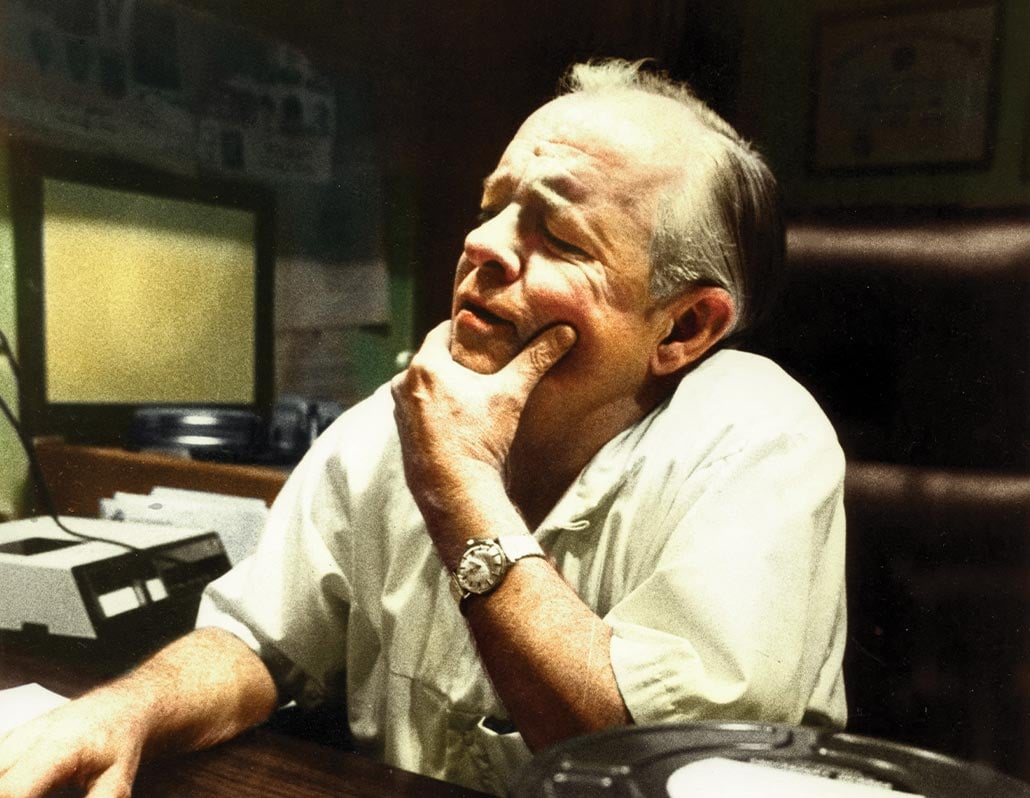THE 1950s
Dye! Catheter! Action!

Dr. F. Mason Sones in his natural element: deep in thought amid canisters of heart catheterization films. “At first, some people though he was a nut — which he was,” recalled William Proudfit, MD, who led Cleveland Clinic’s Department of Clinical Cardiology from the mid-1960s through the mid-1970s. “But they became convinced that he was a smart nut.” | Photo: Cleveland Clinic Archives | Colorized by Sanna Dullaway
The musical Gigi won the Academy Award for Best Motion Picture in 1958, but an entirely different picture created a sensation at Cleveland Clinic.
That was the year that F. Mason Sones, MD, became the father of moving cine-coronary angiography, a method for viewing the heart and its vessels with X-rays recorded on motion picture film. It happened quite by accident.
The cardiologist was imaging the left ventricle of a patient. Suddenly, the catheter slipped and squirted 40 milliliters of dye into a coronary artery, which nearly caused the patient’s heart to stop.
Fortunately, Dr. Sones remembered that a strong cough could essentially reboot a heartbeat. “COUGH! COUGH! COUGH!” he shouted, underscoring the urgency of the situation with a choice expletive. The patient coughed. Moments later, the heart rhythm was restored to normal.
Sweet relief turned to sheer delight when Dr. Sones turned to the viewing screen and saw a vivid image of the coronary artery and its branches. Excited by the possibility of obtaining the same result with a smaller (and safer) amount of dye, he rushed back to his office.
“I’ve just made history!” he told his secretary, Elaine Clayton.
She looked up from her typewriter and said: “What, again?”
Sones’ Laws
Dr. F. Mason Sones lived by his own code of conduct, informally known as “Sones’ Laws”:
1. Be honest.
2. Aim for perfection.
3. Find an expert.
4. Don’t read or write.*
5. Don’t calculate.**
6. Don’t rely on gadgets.
7. Don’t watch the clock.
8. Don’t repeat experiments indefinitely.
9. Concentrate on the problem.
10. Simplify the problem.
11. Make a decision.
12. Communicate.
* Dr. Sones preferred listening observing and thinking.
** As far as Dr. Sones was concerned, there was more to truth than numbers.
